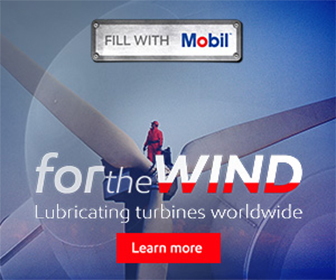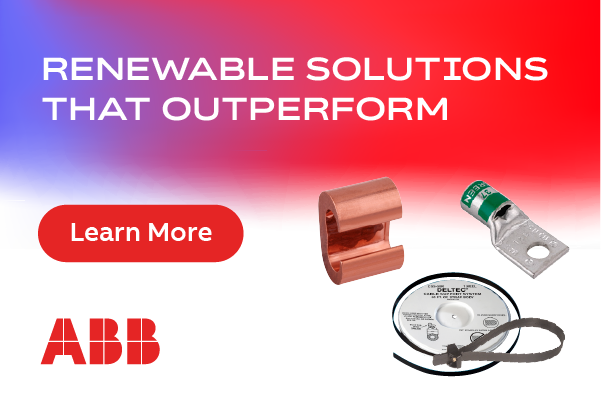Corrosion Control: Maintaining offshore wind towers
 Whether it’s in shallow or deep seawaters, offshore wind turbines face a challenge that onshore turbines don’t—and that’s the water. Though both onshore and offshore towers and blades deal with various weather systems, from rain to hail, and sometimes snow, the foundation of offshore turbines face the ocean waves 24/7.
Whether it’s in shallow or deep seawaters, offshore wind turbines face a challenge that onshore turbines don’t—and that’s the water. Though both onshore and offshore towers and blades deal with various weather systems, from rain to hail, and sometimes snow, the foundation of offshore turbines face the ocean waves 24/7.
This is an issue as most wind turbines and support structures are fabricated from carbon steel materials, and the corrosion effects of steel structures in seawater are well known and documented. Resulting damage can range from negligible to severe, depending on the type of protection systems utilized. As a result, there are factors that must be considered during the planning and design phases of an offshore project to maintain the longevity of the turbines, including: the service life; the environmental conditions; as well as the level of inspection and maintenance required.
Deterioration of construction materials caused by corrosion is important when determining the service life of an offshore wind project and, as such, the overall corrosion potential must also be evaluated. Generally, the service life of a wind farm is about 20 to 30 years; meaning most of the materials used in tower construction would be affected by the corrosive environmental conditions over time. Corrosion control measures, therefore, become essential to maintain the structural integrity and the overall success of any offshore wind farm.
To properly minimize corrosion effects on steel structures, it’s critical that the design and the material specifications for an offshore project be reviewed by an expert in the corrosion field, so appropriate recommendations are provided and become a part of the overall project design.
Assessing the environmental zones
Corrosion of steel in marine environments is mostly electro-chemical in nature. To fully evaluate corrosion of any offshore steel structures, it’s necessary to examine each area or “zone” of the structure exposed separately, as the environmental conditions for each area differs. The zones of environmental evaluation include: atmospheric; splash/tidal; submerged; and soil (the soil below mud line).
Although it might not seem all that significant, the corrosion rate in each of these zones can vary considerably. The lowest corrosion rate is in the soil zone (approximately 25 μ to 100 μ (microns per year), while the highest rate is found in the splash zone (approximately 100 μ to 350 μ per year).
Causes of corrosion
Corrosion occurs either because of the physical and/or chemical differences present in metals or in the environment, and normally occurs in the presence of moisture and oxygen. The corrosion mechanism is electrolytic or chemical.
The rate of corrosion is affected by many environmental factors, of which some of the most important are as follows:
• Different aeration. This includes variations in oxygen concentration at the steel surfaces. Oxygen concentrations near the steel surfaces (below the mud line) are normally low and, therefore, the differential aeration cells in this area are either quite weak or don’t develop at all. This is one of the reasons why the corrosion rate in soil is so small.
• Soil/water resistivity. This involves the ability of soil/water to conduct electric current. The lower the resistivity, the more corrosive the environment.
• pH factor. This is an indicator of acidity or alkalinity. The pH of seawater is usually in the range of pH 7 or pH 8. If pollutants are in the water, however, it’s possible to have low pH value (below 4), which indicates acidic conditions. This can accelerate corrosion.
• Marine organisms. Organisms, such as barnacles, can accelerate corrosion by creating a differential aeration condition. Another organism, anaerobic bacteria (found in oxygen-free environments), increases corrosion by changing sulfate to sulfides, which attack steel.
Corrosion protection
Optimum corrosion control tends to be achieved by a combination of methods. There are four basic methods that can be used to effectively control corrosion, and should be considered during the planning stages of any wind power project.
These methods include:
1. Material selection. Material selected for a project must not only perform adequately in the environment it’s to be installed in, but it must also be economically justifiable. As previously mentioned, the material mostly specified for wind farms is carbon steel, and this is primarily due to cost considerations.
2. Design/fabrication practices. Wind tower designs should take the effects of combining multiple materials into consideration. If possible, combining two or more different metals should be avoided to eliminate the formation of galvanic cells, which can result in bi-metallic corrosion.
3. Coating considerations. Coatings are used to insulate steel from the environment. Coatings are the main corrosion control system for the splash/tidal and atmospheric zones. They can also be effective in reducing the cathodic protection current requirements (see point 4), when used in buried or submerged structures. Protective coatings are specified and applied to structures in all three zones of environmental exposures (atmospheric, splash/tidal, and submerged). To be effective, however, the coating must be selected based on the criteria provided on project specifications, and meet the service life requirements of the project.
Here are some coating considerations per zone…
• Atmospheric zone: The coating system must be designed to resist UV, chlorides, damaging winds, and temperature changes.
• Splash/tidal zone: The coating system must be designed to resist moisture permeation to the substrate, some UV exposure, chlorides, marine growth, and abrasion.
• Submerged zone: The coating system must be designed to resist moisture permeation to the substrate, chlorides, marine growth, abrasion, and must be compatible to the cathodic protection system.
4. Cathodic protection. Cathodic protection is an electrochemical method of corrosion control. It’s an effective way of protecting not only coated, but also bare metallic structures installed in water or below the grade (soil). It’s also partially effective in the tidal zone. There are two types of cathodic protection systems: the galvanic, which uses sacrificial anodes (such as zinc or aluminum); and the impressed current, which uses specially formulated anodes and a rectifier that changes AC power to DC power.
Conclusion
Coatings and cathodic protection can minimize, and sometimes even completely prevent, the corrosion issues that an offshore wind farm faces for the specified service life of towers and their foundation. Corrosion control measures should be an integral part of any offshore project plans, so the water is no longer a concern.
Russell Corrosion Consultants (RCC) provides consulting solutions and corrosion-mitigation designs on projects, globally.
Russell Corrosion Consultants, Inc.
www.russellcorrosion.com
Author: Steve Nikolakakos
Volume: May/June 2013









